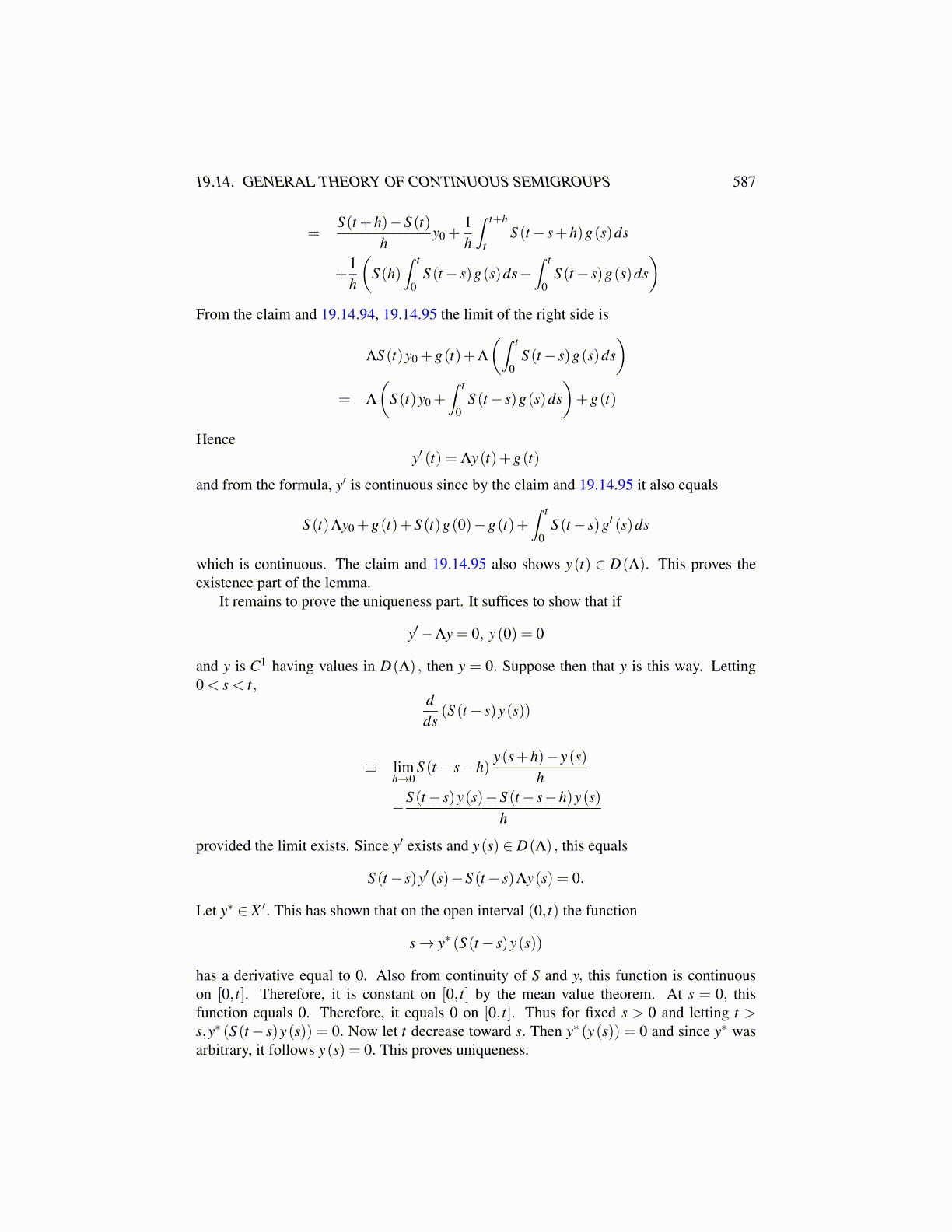
19.14. GENERAL THEORY OF CONTINUOUS SEMIGROUPS 587
=S (t +h)−S (t)
hy0 +
1h
∫ t+h
tS (t− s+h)g(s)ds
+1h
(S (h)
∫ t
0S (t− s)g(s)ds−
∫ t
0S (t− s)g(s)ds
)From the claim and 19.14.94, 19.14.95 the limit of the right side is
ΛS (t)y0 +g(t)+Λ
(∫ t
0S (t− s)g(s)ds
)= Λ
(S (t)y0 +
∫ t
0S (t− s)g(s)ds
)+g(t)
Hencey′ (t) = Λy(t)+g(t)
and from the formula, y′ is continuous since by the claim and 19.14.95 it also equals
S (t)Λy0 +g(t)+S (t)g(0)−g(t)+∫ t
0S (t− s)g′ (s)ds
which is continuous. The claim and 19.14.95 also shows y(t) ∈ D(Λ). This proves theexistence part of the lemma.
It remains to prove the uniqueness part. It suffices to show that if
y′−Λy = 0, y(0) = 0
and y is C1 having values in D(Λ) , then y = 0. Suppose then that y is this way. Letting0 < s < t,
dds
(S (t− s)y(s))
≡ limh→0
S (t− s−h)y(s+h)− y(s)
h
−S (t− s)y(s)−S (t− s−h)y(s)h
provided the limit exists. Since y′ exists and y(s) ∈ D(Λ) , this equals
S (t− s)y′ (s)−S (t− s)Λy(s) = 0.
Let y∗ ∈ X ′. This has shown that on the open interval (0, t) the function
s→ y∗ (S (t− s)y(s))
has a derivative equal to 0. Also from continuity of S and y, this function is continuouson [0, t]. Therefore, it is constant on [0, t] by the mean value theorem. At s = 0, thisfunction equals 0. Therefore, it equals 0 on [0, t]. Thus for fixed s > 0 and letting t >s,y∗ (S (t− s)y(s)) = 0. Now let t decrease toward s. Then y∗ (y(s)) = 0 and since y∗ wasarbitrary, it follows y(s) = 0. This proves uniqueness.